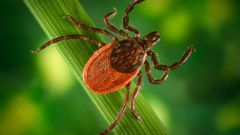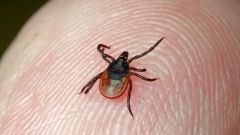Ticks and their dangers
Black forest mite cannot travel long distances, therefore his victims, he waits sitting on a branch, leaf or blade of grass. Once a person is on distance of the extended legs of the tick, it clings to your clothing or skin (most often on the face, neck, head and feet) and begins to look for a suitable for "bloodshed" place. Finding the right, fully insect plunges its proboscis under the skin and starts sucking blood from the subcutaneous blood vessels. And sometimes itself gets under the skin.
To date, forest ticks are most often attack people not only in forests but also in suburban, rural and even urban areas.
Sucking human blood, the tick distinguishes the wound quite a large number of saliva, which implements the body of pathogens of various infections. One of the most dangerous diseases spread by ticks, is encephalitis – inflammation of the brain, which can lead to death and serious complications in case of survival of the patient.
How to remove a tick
If you find a tick, pull it it is necessary very carefully. Do not start to panic – trembling hands it is difficult to remove the tick, not tearing immersed in the body of the proboscis. Place a large parasite with oil or alcohol and wait twenty minutes until it starts to suffocate under the oil-film and crawl out. Then, if the tick does not get out on their own, catch its thread loop or tweezers, gently shake and carefully remove from the skin. Be sure to disinfect and seal the wound left after the tick, because through it the body can get infected.
Remote parasite, it is desirable to put in tightly closed bottle and take the examination in an institution.
Try to visit the clinic, where you will be injected immunoglobulin containing antibodies against HBV and mites. Usually medication is single, but these appointments should be at least a month, and in case of symptoms the treatment will have to take place in the hospital.
To go to the hospital after a tick bite is just necessary if one notes the cramps, paralysis of certain groups of muscles, impaired sensitivity, headaches and high temperature. All these symptoms may indicate the development of tick-borne encephalitis, which in absence of appropriate treatment with medicine can lead to death within one week.


